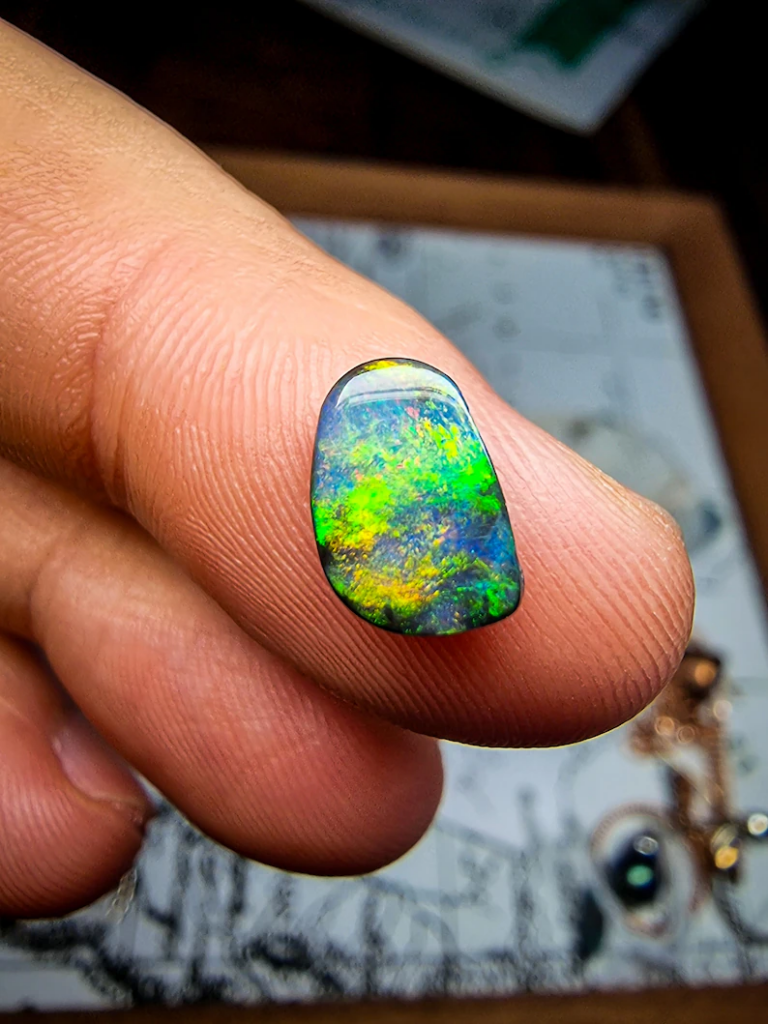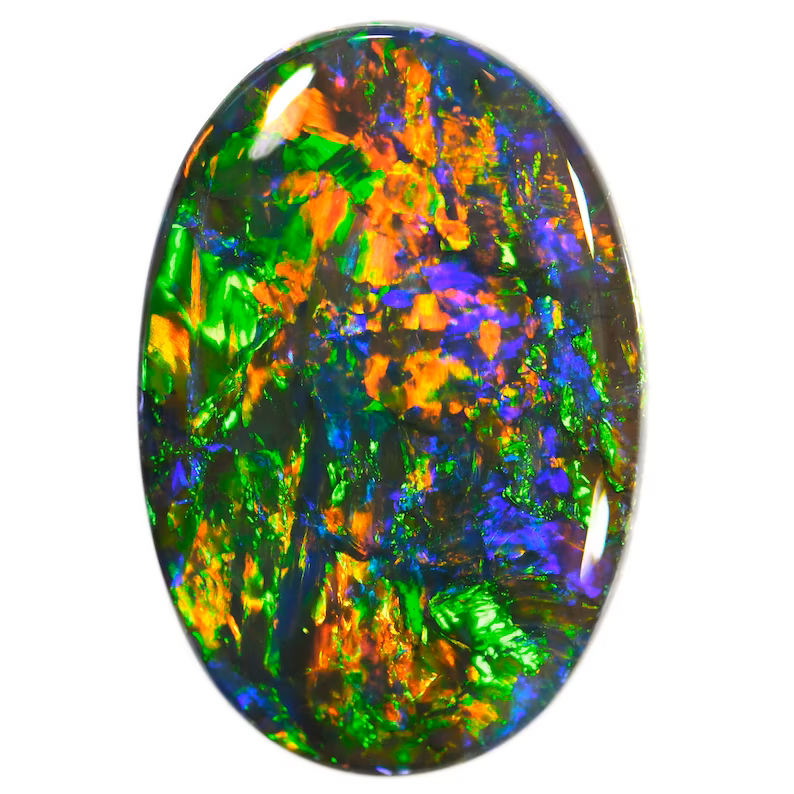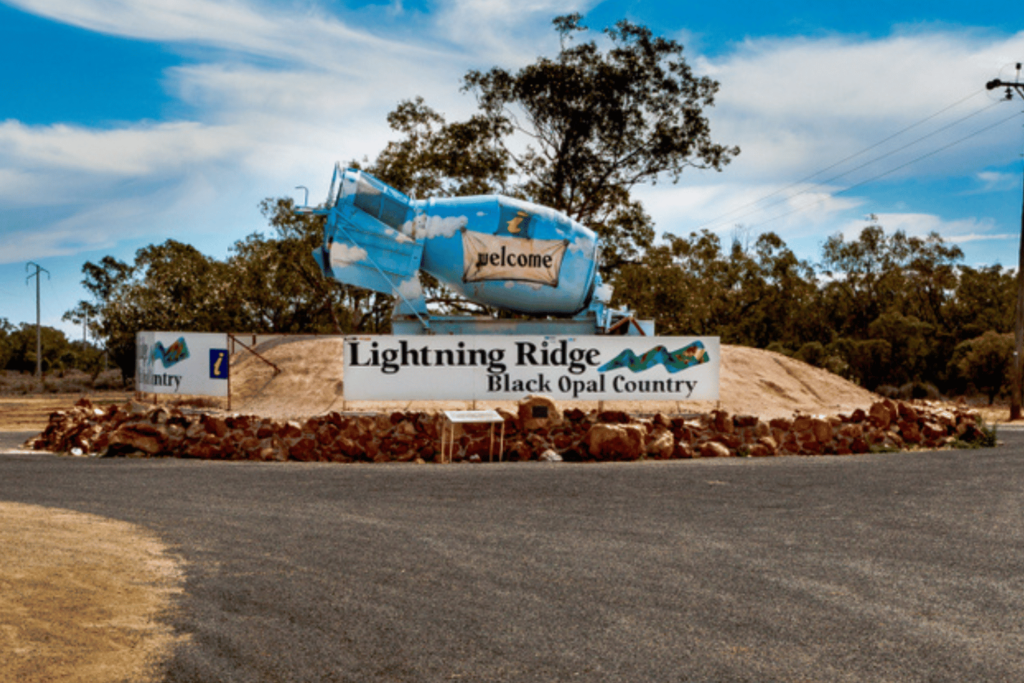The Lightning Ridge area in New South Wales, Australia is very well known for producing some of the world’s most valuable black opals. Known for their alluring combination of dark background and kaleidoscope of vibrant colors, Lightning Ridge black opals are considered among the most valuable and sought-after gemstones in the world.

The unique composition of the Lightning Ridge black opal includes trace elements of carbon and iron oxide, which helps set it apart from its peers by allowing it to darken the stone resulting in an enhanced display of color ranging from blue and green to red as it captures and “plays” with the light.
The geological conditions that created the Lightning Ridge black opal can be traced back to the age of dinosaurs, nearly 140 million years ago. It was during this time in the Earth’s history that a massive sea laid the foundation for sediment deposits that would eventually crystallize into the coveted black opals we find today.
Distinctive Qualities of Lightning Ridge Opals
- Spectrum: Range includes red, orange, yellow, green, blue, and the sought-after black.
- Valuation Factors: Size, hue, and quality contribute to their high worth.
- Chemical Makeup: Composed of hydrated silica, SiO₂·nH₂O.
- Hardness: Between 5.5 and 6.5 on the Mohs hardness scale.

History of the Lightning Ridge Black Opal
In 1901, Charles Nettleton, a boundary rider by trade, encountered a colorful and remarkable opal near Lightning Ridge during a camping trip. This remarkable find signified the potential of Lightning Ridge to become a significant source of black opal.
Initially, kangaroo hunters in the late 19th century came across signs of opal in the vicinity, but the magnitude of the find was not fully grasped until Nettleton’s discovery.

Nettleton, who also excelled in photography, documented the efforts of opal miners through his photography. This documentation done by Nettleton helped garner global awareness for Lightning Ridge’s opal fields.
As word spread about Lightning Ridge black opals, waves of miners and prospectors converged on the area, with hopes of finding their own precious stones. This influx of miners transformed Lightning Ridge into an epicenter of opal mining, especially for its unique and valuable black opal.
Current Mining Operations at Lightning Ridge

The landscape of opal mining in Lightning Ridge has significantly evolved over the years. Recent discoveries of new fields have been made, but exploration costs and penalties have created a less favorable environment for miners seeking new areas.
The regulatory and financial hurdles have led to a decrease in the number of active miners—from about 1,500 in the 1990s to roughly 50-60 today. This shift underscores a broader challenge within the industry: the diminishing incentive to prospect for new areas.
Despite these obstacles, there are a dedicated group of miners that remain committed to working their claims.. Beyond this period, they may have to consider exploration drilling or revisiting older areas in order to sustain operations amidst the changing dynamics of the opal mining industry in Lightning Ridge.

